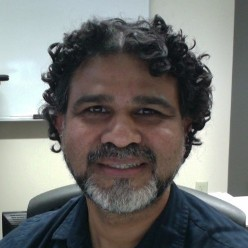Emerging Technology and Technique in Civil and Construction Engineering
A special issue of Sensors (ISSN 1424-8220). This special issue belongs to the section "Intelligent Sensors".
Deadline for manuscript submissions: closed (1 December 2020) | Viewed by 15347
Special Issue Editors
Interests: automation; safety; tracking; building information modeling; construction engineering
Interests: structural health monitoring; data-driven monitoring system; multi-physics simulation; passive wireless sensor design
Special Issues, Collections and Topics in MDPI journals
Interests: microwave remote sensing; geographic information systems (GIS); data visualization; land scatterometry and radiometry; remote sensing applications to water resources and hydrologic studies; integration of remote sensing, GIS, and global positioning system for Earth system science research
Special Issue Information
Dear Colleagues,
Recent technological and technical advances have shifted the way civil and construction engineers operate in many aspects. They have provided new ways of collecting data that were previously impossible and new ways to analyze the data and broaden our horizons in seeking solutions to many persistent problems. This Special Issue addresses a wide range of research topics that create innovation using emerging technologies and techniques in civil and construction research and applications.
Relevant topics include but are not limited to:
- Wireless, vision, laser scanning, and sound technologies for innovative solutions to civil and construction problems
- Techniques such as artificial intelligence, machine learning, and natural language processing
- Virtual and augmented reality for automated system analysis and monitoring
- Development of new algorithms using sensed data
- Smart city and integrated urban development
The key focus of this issue pertains to the use of sensed data. This Special Issue seeks research articles focusing on sensor applications, software development including the use of existing techniques as well as new algorithm development, and integration of software (techniques) and hardware (sensors) for application in civil and construction problems.
Dr. Jee Woong Park
Dr. Chunhee Cho
Dr. Haroon Stephen
Guest Editors
Manuscript Submission Information
Manuscripts should be submitted online at www.mdpi.com by registering and logging in to this website. Once you are registered, click here to go to the submission form. Manuscripts can be submitted until the deadline. All submissions that pass pre-check are peer-reviewed. Accepted papers will be published continuously in the journal (as soon as accepted) and will be listed together on the special issue website. Research articles, review articles as well as short communications are invited. For planned papers, a title and short abstract (about 100 words) can be sent to the Editorial Office for announcement on this website.
Submitted manuscripts should not have been published previously, nor be under consideration for publication elsewhere (except conference proceedings papers). All manuscripts are thoroughly refereed through a single-blind peer-review process. A guide for authors and other relevant information for submission of manuscripts is available on the Instructions for Authors page. Sensors is an international peer-reviewed open access semimonthly journal published by MDPI.
Please visit the Instructions for Authors page before submitting a manuscript. The Article Processing Charge (APC) for publication in this open access journal is 2600 CHF (Swiss Francs). Submitted papers should be well formatted and use good English. Authors may use MDPI's English editing service prior to publication or during author revisions.








